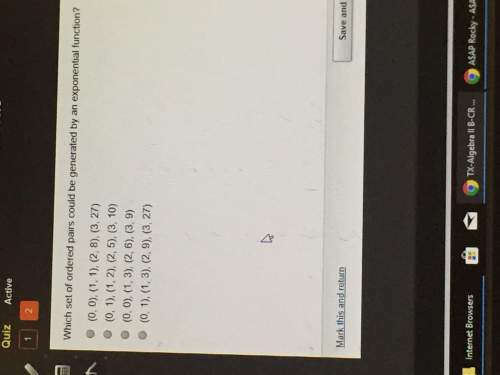
Mathematics, 25.01.2020 00:31 conyabrew82
Let y1 and y2 have the joint probability density function given by:
f (y1, y2) = k(1 − y2), 0 ≤ y1 ≤ y2 ≤ 1, 0, elsewhere.
(a) find the value of k that makes this a probability density function.
(b) find p(y1 ≤ 3/4, y2 ≥ 1/2).

Answers: 3


Other questions on the subject: Mathematics

Mathematics, 21.06.2019 18:00, britneyvaughn219
Agraph of a trapezoid can have diagonals with slopes that are negative reciprocals and two pairs of adjacent sides that are congruent, true or false, and why
Answers: 1

Mathematics, 21.06.2019 18:00, Megcuttie101
What is the measure of the smallest angle in the diagram? 15 29 32 45
Answers: 2

Mathematics, 21.06.2019 20:30, marahkotelman
Arectangle has a width of 5 cm and a length of 10 cm. if the width is increased by 3, how does the perimeter change?
Answers: 1

Mathematics, 21.06.2019 22:50, alisonlebron15
What is the ordered pair of m’ after point m (5, 6) is rotated 90° counterclockwise?
Answers: 2
You know the right answer?
Let y1 and y2 have the joint probability density function given by:
f (y1, y2) = k(1 −...
f (y1, y2) = k(1 −...
Questions in other subjects:













